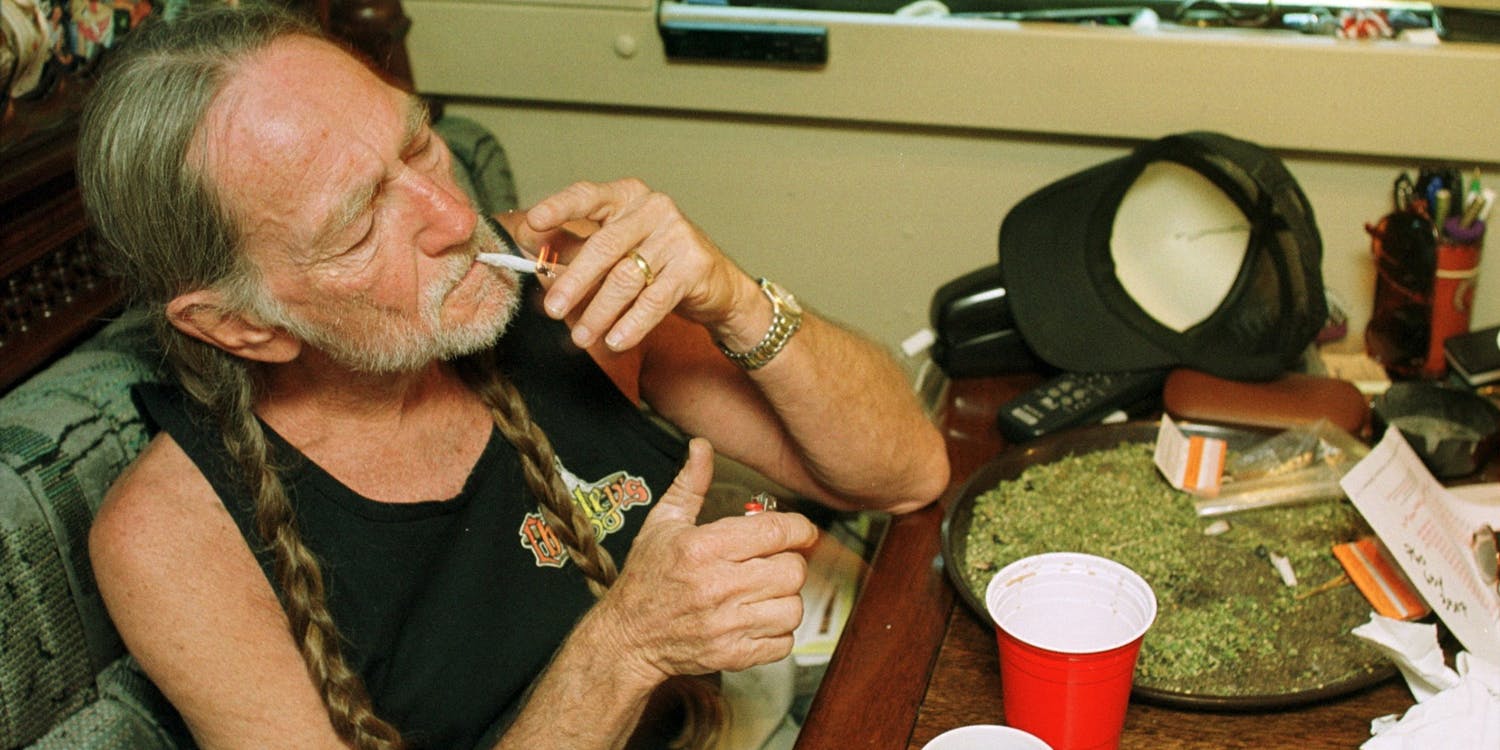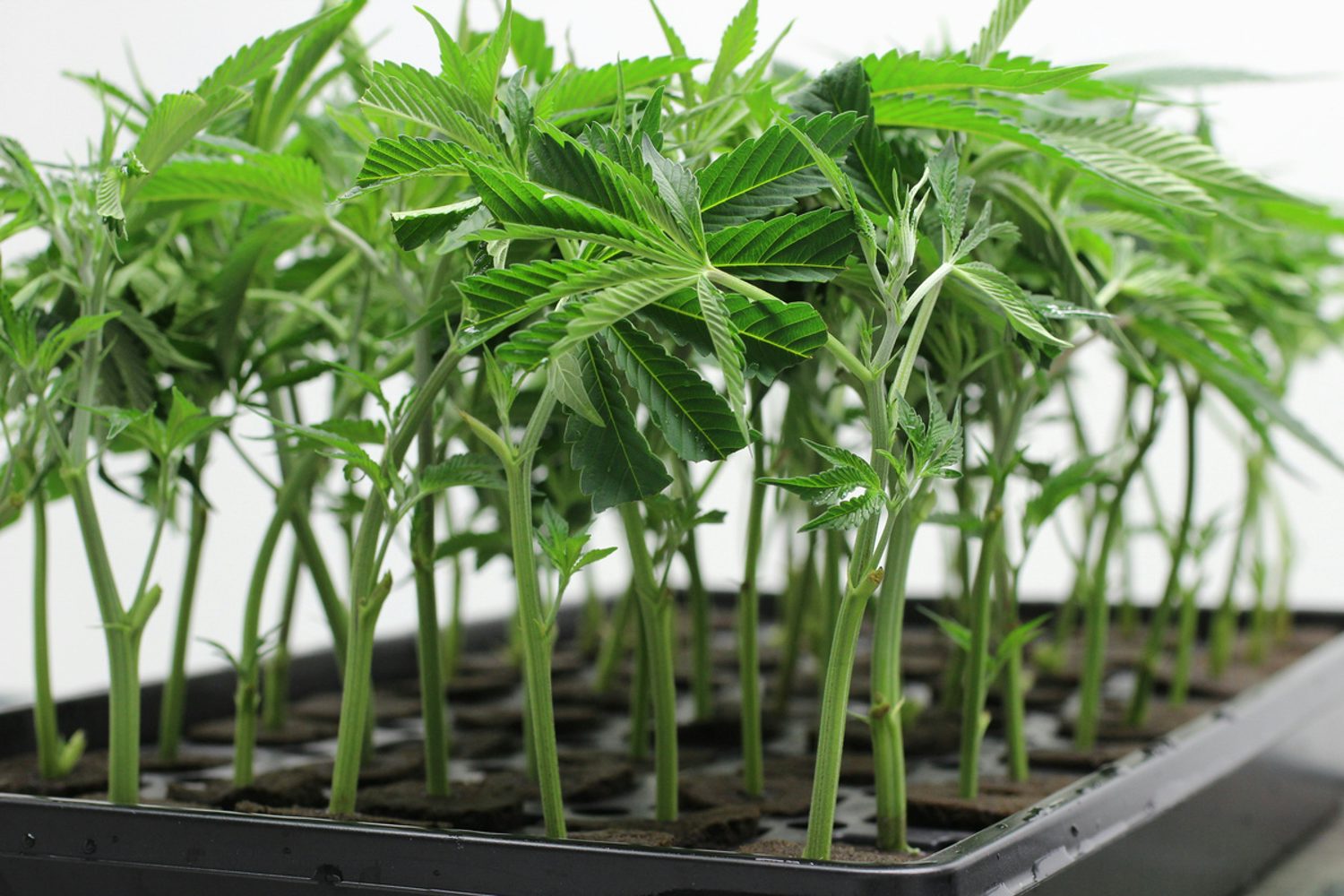
American country singer Willie Nelson takes a drag off a joint while relaxing at his home in Texas, 2000s. A large amount of marijuana is spread out on the table before him (Photo by Liaison/Getty Images)
The First Legal Grow-Ops Are Finally Coming To Texas…But There’s A Catch
You would probably never think of Texas and legal weed in the same sentence, but with new legislation that’s about to change. Well, kind of.
You probably never think of Texas, and legal cannabis grow-operations in the same sentence, but that could be changing.
Legal medical marijuana plants have been planted in the Lone Star State. Compassionate Cultivation, one of the companies licensed to grow high-CBD, low-THC medicinal cannabis under Texas’ limited medical marijuana program, made the announcement last week.
The news came just a day after the Texas Department of Public Safety gave Compassionate Cultivation final approval to participate in the state’s Compassionate Use Program. The first business to be approved, Cansortium Texas, had been approved September 1st, 2017.
Only three licenses were awarded to cannabis grow-ops.
The DPS, under Texas’ medical marijuana law, has one final license to award. That one will almost certainly go to Surterra, which is the only other company to get conditional approval from the Texas Department of Public Safety earlier this year.
The state’s medical marijuana law, the Compassionate Use Act, was passed in 2015. The DPS has been laboriously setting up byzantine rules for the program ever since.
The goal is to provide cannabis to patients by early next year. Compassionate Cultivation, in a press release, said it would meet that deadline.

The medical marijuana legislation of Texas is so strict
Legislatures in a number of conservative, mostly Southern states, over the past few years, have passed so-called “CBD only” laws; Texas is one of those states.
The Texas Legislature “legalized medical marijuana” in 2015, but the program is one of the strictest in the country. It’s only open to patients with intractable epilepsy. Patients with cancer, multiple sclerosis, chronic pain, and other conditions need not apply. It also only allows for the growth of cannabis low in the main psychoactive compound, THC.
This “low-THC” model of medical marijuana legalization has also passed other traditionally conservative Southern states such as Alabama and Georgia. What this does, according to the more cynical skeptics, is give lawmakers a way to feel good about themselves without actually summoning up the courage to pass a real medicinal cannabis law.
The only problem is, CBD in isolation doesn’t seem to be as effective as THC, CBD, and the other cannabinoids in combination. That’s because of what is popularly known as the “Entourage Effect,” through which whole-plant cannabinoids (“phytocannabinoids” is how scientists distinguish them from the body’s own “endocannabinoids”) work in concert.

The state is only allowing three companies to become licensed to participate in its program has royally pissed off dozens of other companies which had applied.
The Texas Cannabis Industry Association in August mailed formal complaints to the DPS and Texas Governor Greg Abbott, accusing the state of implementing the program in bad faith by licensing too few companies.
“Texas DPS was supposed to license three separate cannabis businesses by September 1,” said Heather Fazio of the Texas Medical Marijuana Project. “Sixty days after their deadline, they are now 2/3 of the way to being compliant with their statutory obligation.”
Once approved, the companies must pay an annual fee of nearly $490,000. That’s in addition to a “renewal fee” of $320,000 every two years if they want to keep operating in the state.
That’s not the only flaw in the state’s’ medical marijuana law. The Compassionate Use Act also specifies that physicians “prescribe” medical cannabis. That’s a problem because doctors, under federal law, can lose their ability to prescribe controlled substances if they “prescribe” cannabis, because it’s a Schedule I drug according to federal law.
The Texas Marijuana Policy Project is “concerned that doctors will be required to violate federal law to participate,” according to Fazio.
Herb Recommended Products:
READ MORE










